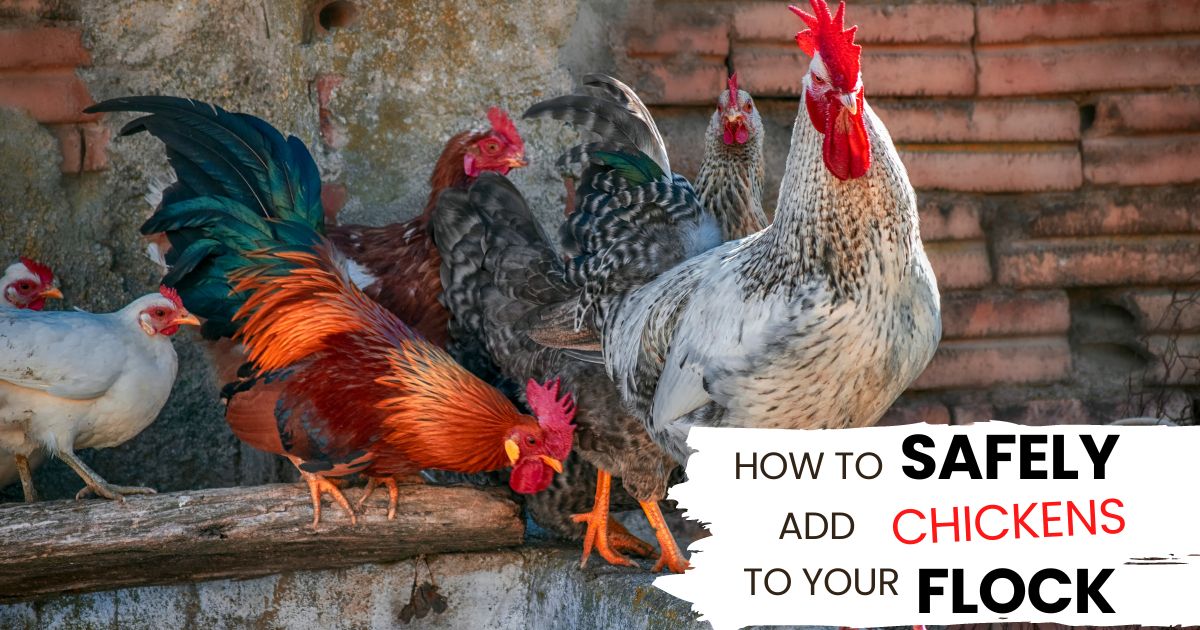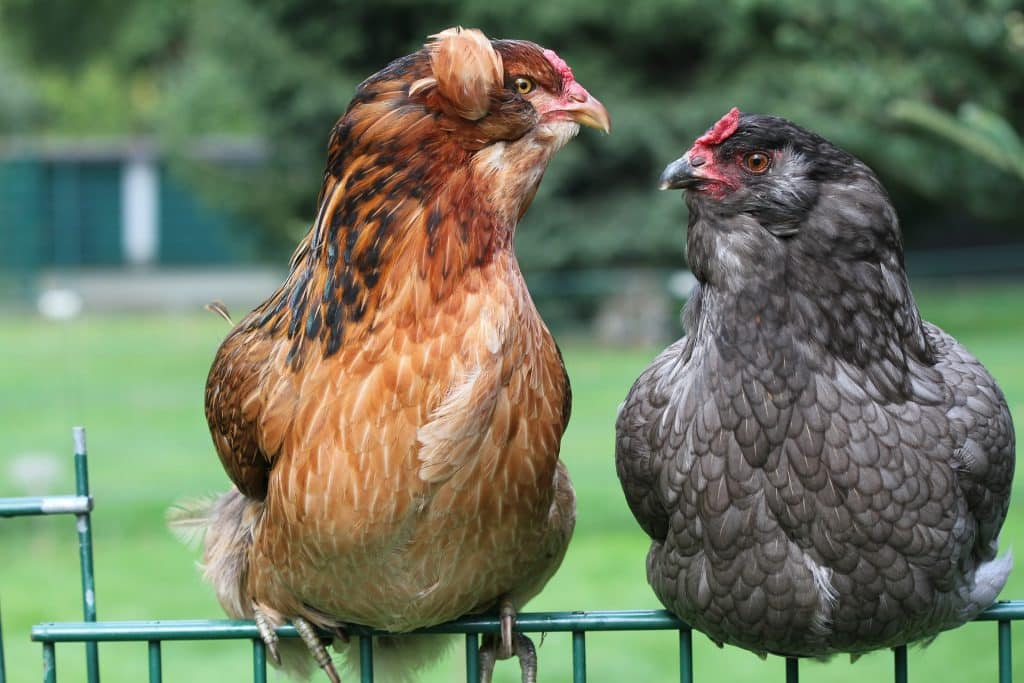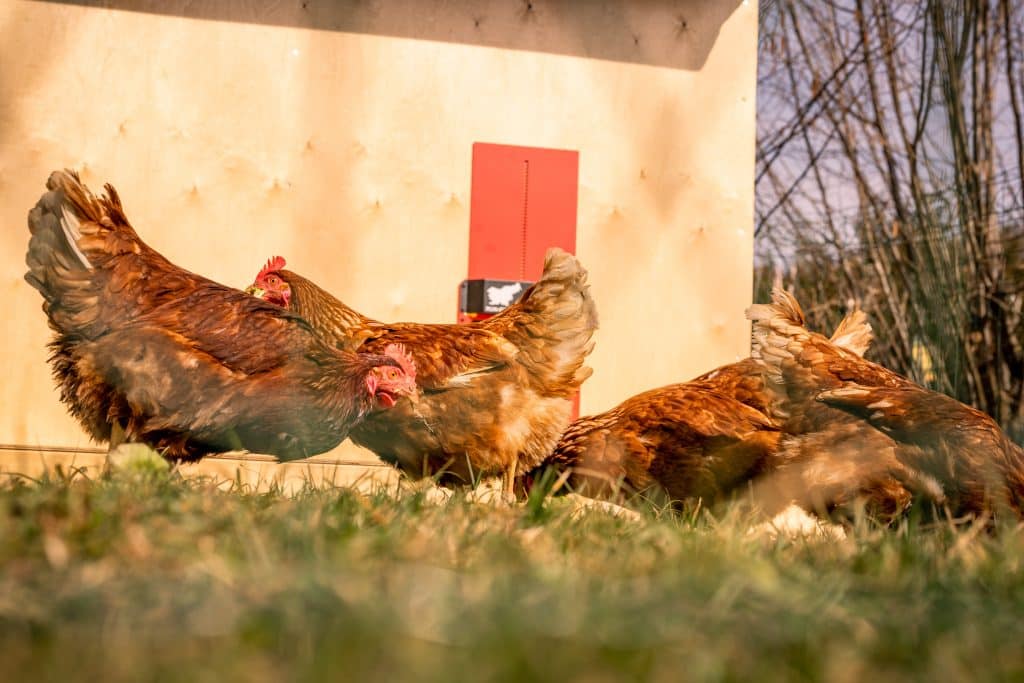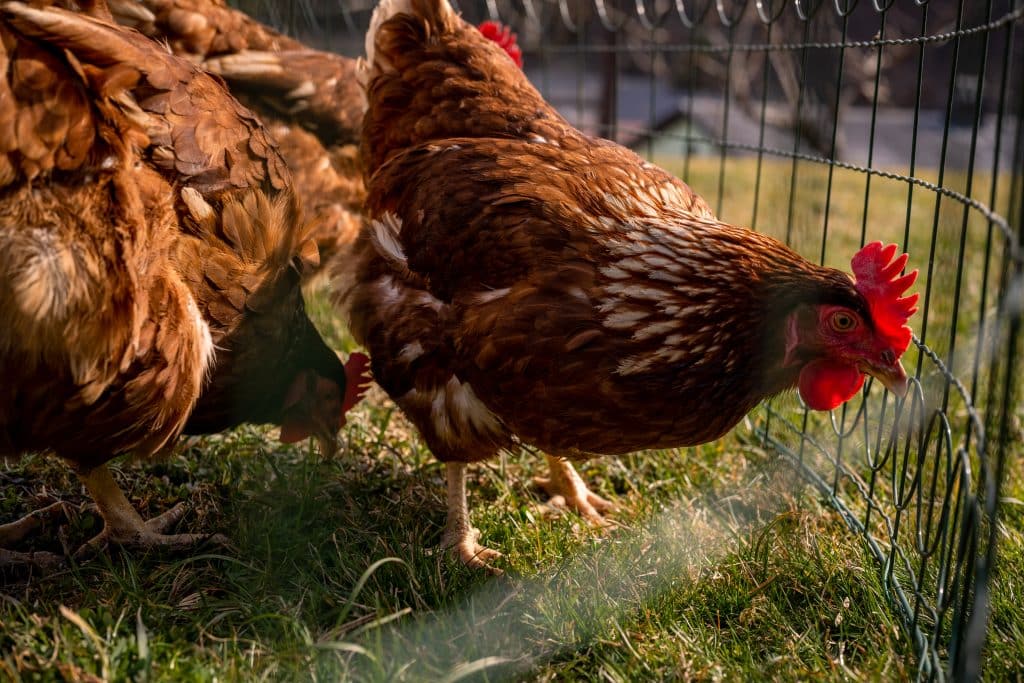If you’re raising backyard chickens for eggs, companionship, or a hobby, you’ll likely need to introduce a few new chickens every couple of years to keep your flock going strong. Most hens will lay eggs for 2 to 4 years, with the production and quality declining over time. Adding new chickens will ensure you keep fresh eggs and a healthy flock. These are some of the most beautiful chicken breeds in the world.
Adding new chickens to your existing flock can be a little trickier than it sounds, though. You can’t just open the coop and toss in some new hens and hope they get along. Chickens have a hierarchy amongst themselves called a pecking order, which is how the larger chickens establish their dominance among the flock. They’ll peck, chase, and fight the other chickens to establish this order amongst themselves. If you add in a new chicken without warning, you will upset the pecking order. Chickens can become distressed and very aggressive, which could result in the death of your new feathered friend.
If you have an existing flock, this pecking order will have already been established. So when you get ready to add new chickens to your flock, there are a few precautions you’ll need to take so that the pecking order is established again without hurting your chickens.
Preparing for New Chickens
1. Add Extra Space
Before expanding your backyard flock of chickens, there are a few things you need to consider. Be sure that you have enough space, food, and water for new chickens in your coop. They will need space to roost and a place to lay eggs, for example, a Run-Chicken nesting box. If your coop is already large enough, adding a few extra roosts and a food bowl may be enough.
Depending on how many chickens you are adding to your backyard flock, you may need to add on to your coop or even build a new one. You want your chickens to have enough space to lay eggs, eat, and sleep comfortably. Make sure your coop and run are safe and secure from predators by mounting a Run-Chicken automatic coop door. The Run-Chicken automatic coop door will close when the sun goes down, keeping predators out and your chickens safe for the night. A good-quality fence around the chicken run will also help protect your flock from predators. Read about the common chicken predators in the USA.
2. Isolate New Chickens
If you are purchasing new chickens to add to your flock, a good first step is to isolate them for a while to monitor them. The reason for quarantining them is to ensure they are free of infections or diseases. Adult chickens are more likely to carry diseases, and you don’t want to infect your flock. Common things to look for are scaly legs, a shriveled or dull cone, mites, or fluid coming from their eyes or nose. If you aren’t sure, check with a local farmer or veterinarian. If, after a week, they seem relatively healthy, then you can feel good about moving on to introducing them to your existing flock.
Age, Size, And Breed
It is best to introduce new chickens when they are around the same size as the chickens in your existing flock. Chickens may bully others that are smaller than them, so be sure to consider that when purchasing different breeds. Some breeds of chickens are significantly larger than others, so do your research on the breeds you are considering.
Sometimes a new chicken may be similar in size to your flock, but you may notice that they are being bullied more than others. This may be because the new chicken isn’t as mentally developed as the more mature ones, also known as “chick brain.” You may need to isolate the new chicken for a few more weeks to let it mature.
How to Introduce New Chickens – Step by step
1. Keep Them In a Separate Cage Close By
When getting ready to add new chickens to your existing backyard flock, the first step will be to introduce them through a fence or gate. You want your existing flock to be able to see, hear, and smell the newcomers, but you don’t want them to be able to touch them just yet. You can place your new chickens in a pen next to your chicken run, or you can put them in a separate pen with your other chickens. Note that penning them inside of the run is seen as an invasion of space to your older flock members, so they may be more aggressive.
By keeping your new chickens in a pen that is close to your existing flock, your flock will have a chance to get used to the sight and smell of the newcomers. Over a few days, they’ll get used to seeing their new feathered friends, and this will help ease the introduction. It’s a good idea to keep them close for a few days to a week and observe your chickens’ reactions. After that, if your existing flock doesn’t seem very aggressive to the newcomers, you’ll be ready to take the next step.
2. Introduction: Change of Scenery
The next step when expanding your flock is the first face-to-face introduction. After your chickens have been kept close to your existing flock for a few days to a week and no longer seem very aggressive, you can introduce them face-to-face. Chickens will establish their pecking order once they meet the newcomers, and sometimes it can get a little hectic or even bloody. A common way to reduce a lot of the fighting and jostling is to create a distraction in the form of a change of scenery.
If possible, let your existing chickens out to free range. This will give them a temporary distraction: the change of environment. While they’re busy scratching and pecking for bugs, you can let your new chickens out to join them. Some squabbling and pecking will happen as they establish their pecking order, but it shouldn’t be too bad after having been exposed to each other for a while.
Keep an eye on the new chickens, and be prepared to break up any fights that last more than a few seconds or seem to draw blood. It can take a few introductions before your chickens get along, so you may want to keep them in their separate pens for another week or so. Sometimes there is an extremely aggressive chicken. If you notice that one chicken just isn’t getting along with the newcomers or seems to keep picking on them, you may need to separate the bully for a few days.
3. Move Into The Coop
Once you’ve introduced your chickens and they seem to be doing fairly well together, it’s time to move them into the coop together. After a few days to a week of letting them free-range together, the new and old chickens will begin to mingle more and more. You may notice that the newcomers are roosting in the existing flock’s coop or vice versa. This is a sign that you can move all of your chickens into the same coop. Be sure they all have enough room to roost and that the run is big enough to accommodate the newcomers. You can remove or dismantle the temporary pen that you had for the newcomers during the day while they’re out, and they will usually follow the rest of the flock at night.
4. Night Placement
Occasionally, you may have a chicken that is confused or doesn’t seem to want to move into the coop with the others. You may need to place it in the coop at night. Usually, the chicken will take this as a sign that this is its new home. Keep a close eye on your new chicken in the morning, as the pecking order will have to be re-established. If you need to move chickens to another coop physically, the best time to do it is at night, as they are more docile, and it makes it easier.
More Tips and Tricks
Adding Chicks
If you are going to add chicks to your existing flock, the best way to do this is to keep them in their own coop away from the existing flock until they are around the same size. Smaller chickens may get bullied by larger ones, so keep this in mind when purchasing chicks. If one of your hens happens to hatch her own chicks, you can leave them in the coop together. The mother hen will protect her chicks until they are about 6 to 8 weeks old and are established in the flock.
How Many Chickens to Add at a Time?
When you are introducing new chickens into an existing flock, it’s a good idea to add at least two new chickens at a time. This will help divide any squabbling and fighting between the two so that one chicken doesn’t get bullied too much or get hurt.
What To Do If They’re Not Getting Along?
It can take up to three weeks for new chickens to become established in your flock, and usually, some fighting and pecking will occur until this happens. But be sure to keep a close eye on the newcomers to ensure they don’t get seriously injured. If they’re not getting along after the first introduction, you can keep them in separate pens and try letting them free-range together for a few weeks. You may sometimes have a very aggressive bird in your flock that seems to keep bullying the newcomers, so you may have to isolate it.
Final words
Expanding your backyard flock can be a scary yet exciting concept. You’ll need to introduce new chickens over time in order to keep your flock going strong, and it’s not as daunting of a task as it may seem. Your new chickens will just need a little security, space, time, and the right introductions to get them started off on the right foot. With these tips and tricks, we’re sure you’ll be successful in introducing new chickens to your flock.
Let us know by joining our Facebook community of Chicken&Egg Lovers.









